Battery test/review summary
The full comparison can be found on my website.

I am working on a large LiIon battery test, this test contains mostly 18650 cells. Each tested battery is posted as a separate review with curves and data for the battery. This article will compare the results of these tests, but I will only include some of the results.
I do not plan to do many updates to the text of this article, but because the charts are fetched from my server they will be updated frequently. All the batteries I have tested will be included, and sometimes also for unpublished test/reviews that might be only partial done, these reviews will be published later when they are finished. This does also explain why a battery can be present in some charts, but not in other.
Because the charts will be updated I will not comment on how different batteries compares to each other in this article, that might not be valid after the next update of the charts.
Note: The picture above does show a sample of the batteries I am testing. At the time of publishing this article only half of them have been tested, but when I am finished many more than shown will have been tested.
18650 battery charts
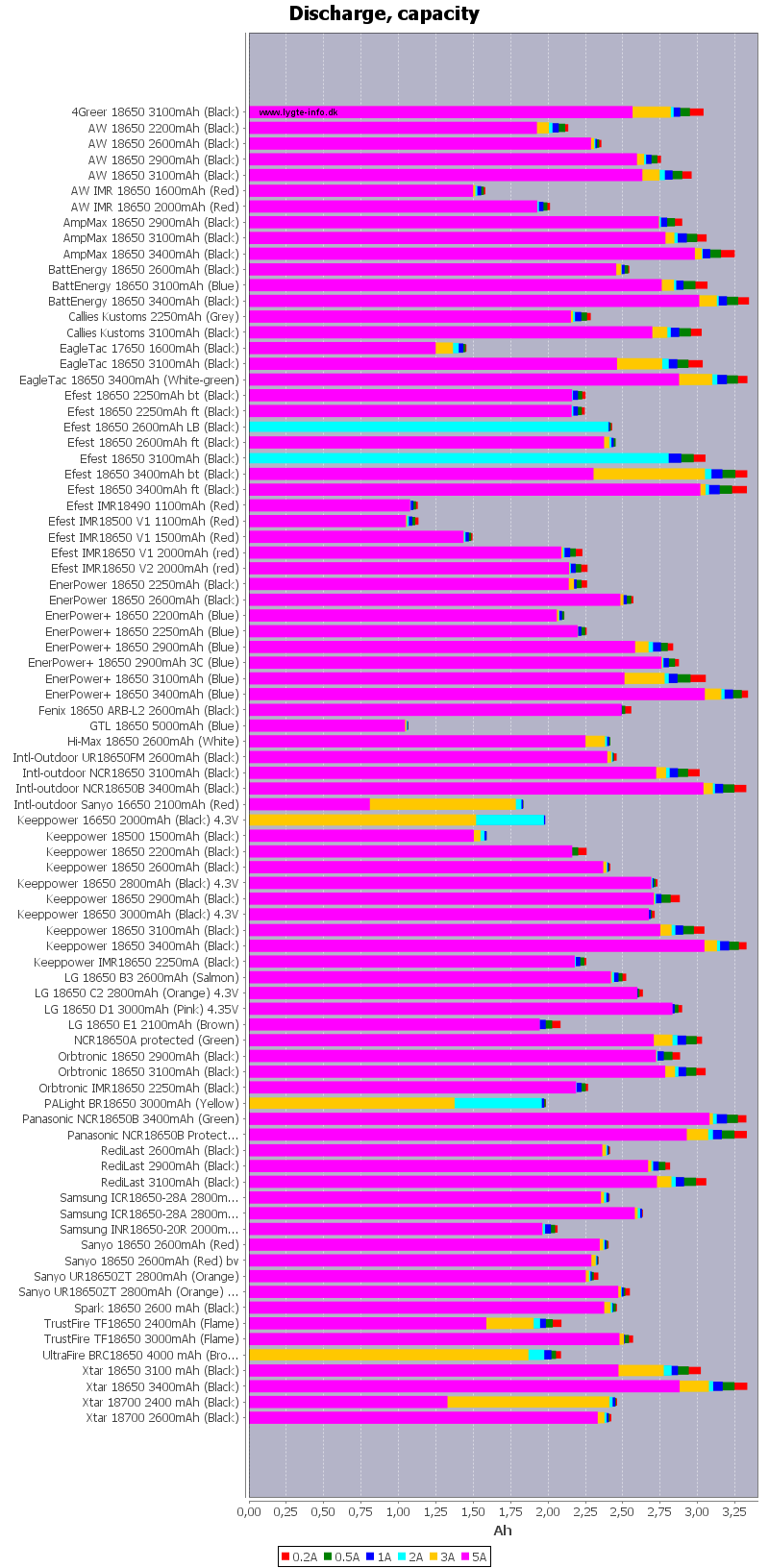
The first chart is the capacity at different current draw. To measure this capacity I have discharged the batteries down to 2.8 volt at the specified current rates (some batteries cannot handle 5A current draw and will not show a 5A bar).

Some lights cannot drain the battery down to 2.8 volt, but need considerable more voltage, especially to get full brightness. In the above chart I have measured the capacity drained when the battery is down to 3.6 volt, again at different current. Batteries that has a lot of capacity when measured to 2.8 volt does not necessary have that when measured to 3.6 volt, especially at high current drains.
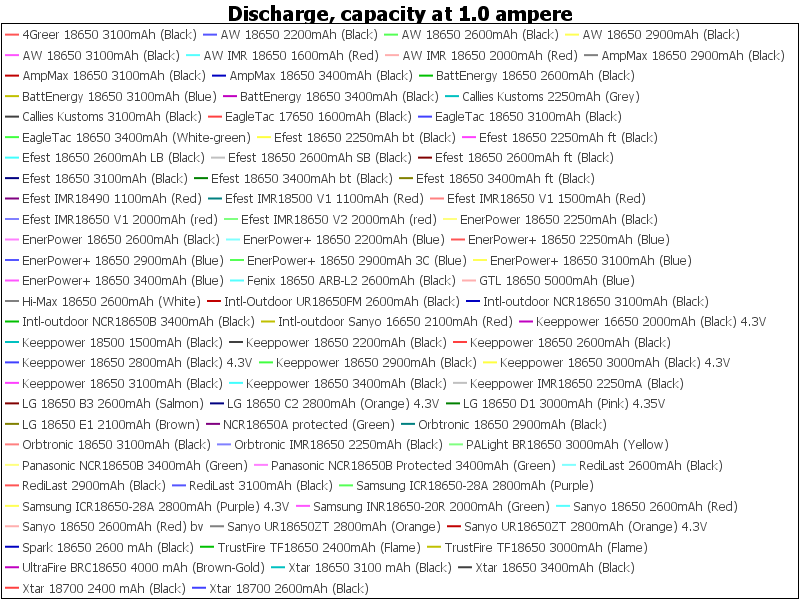
This curve shows how the battery voltage changes when capacity is used from the battery, this curve is made with a 1A current draw. The 1A bar in the above bar charts are based on this curve.
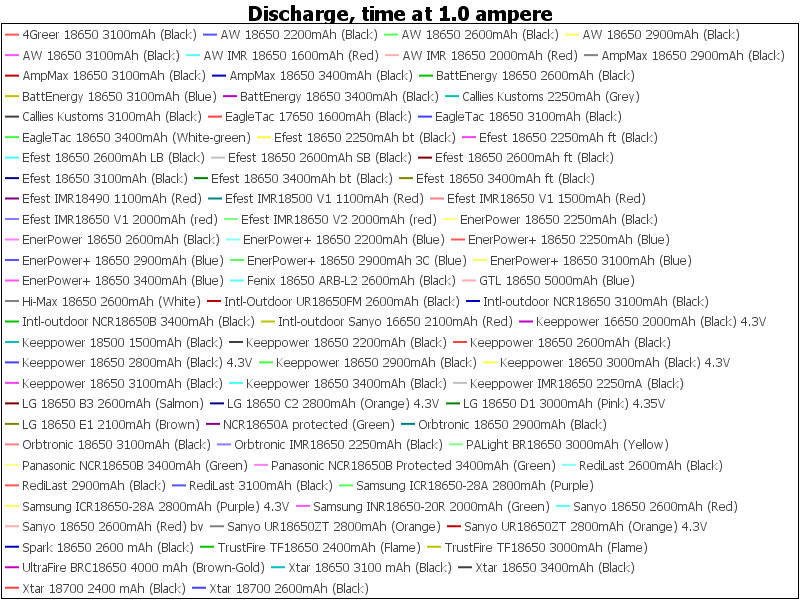
Instead of showing the capacity of the battery, it is also possible to show how long time the battery will last at the 1A current draw.

The batteries has a specified current, this current is the recommended maximum drain on the cell. If this specification is missing, it can usual be assumed to be 2xC, i.e. a 2400mAh battery will have a specified current of 4800mA or 4.8 Ampere. These assumed values are not shown in the chart.
Batteries with a PCB protection also has a trip current, this is at a higher value than the specified current. In my opinion 30% up to 50% above the specified current is best.
The "Protection trip" will be missing for unprotected batteries and because my test equipment is configured to starts at 3 ampere batteries with "Protection trip" below 3 ampere will also be missing.
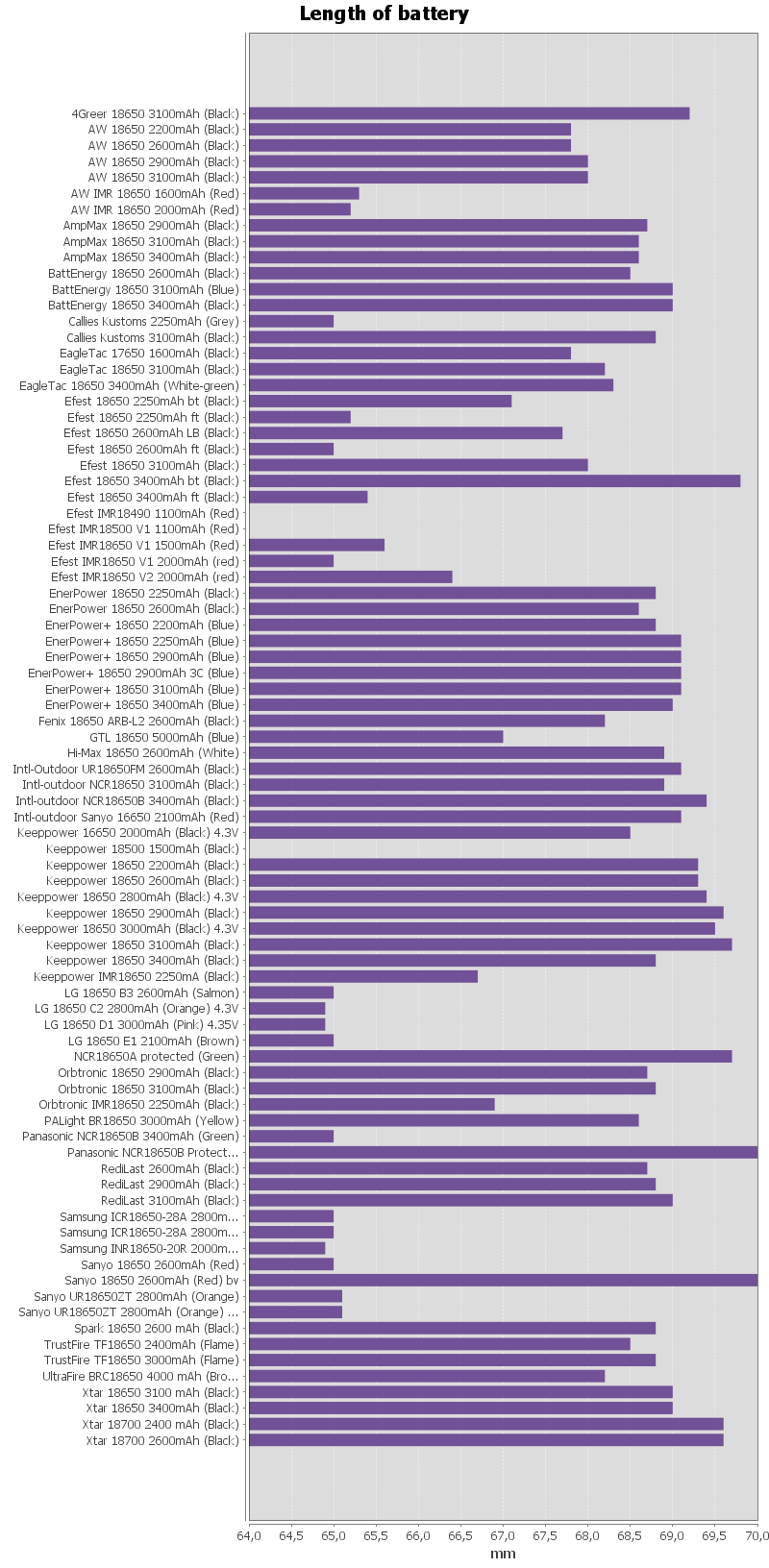
The 18650 specifications means that a cell is about 65 mm long, but protected batteries are longer, because a protection circuit must be added and sometimes there is also added a button top. Not all chargers and lights can take the longest cells.
Simple battery selection guide
This is a very simple guide in how to select the best battery for different types of flash lights, using the charts shown above.
Remember always to check if the light supports the length of the battery (See length chart above) and shape of the positive nipple (See test/review of battery).
The current estimate assumes that the leds are driven at full power.
It is strongly recommended to use protected batteries in most light both for safety and for long battery life (Any battery discharged to much take serious damage).
Lights with 2x18650 batteries in series

These lights will usual use a buck converter to adjust the voltage, this means that a XR-E, XP-E is 0.5A, XP-G is 0.7A, and a XM-L is 1.5A. With two batteries in series the light can use all the capacity in the battery, while staying at full brightness. I.e. the "Discharge, capacity" chart is the one used here.
For 0.5A current, look for the batteries with the longest green bar, they will give most runtime.
For 0.7A current, look for the batteries with the longest green and blue bars, they will give most runtime.
For 1.5A current, look for the batteries with the longest blue and cyan bars, they will give most runtime.
Lights with 1x18650 batteries or 2xCR123 batteries

These lights will usual use a buck converter, but typically have trouble maintaining full brightness when the 18650 battery voltage is low. For current XR-E, XP-E is 1A, XP-G is 1.5A, and a XM-L led will need 3A.
To find the battery that maintains the highest brightness for the longest time use the chart "Discharge, capacity down to 3.6 volt"
For 1A current, look for the batteries with the longest blue bar, they will give most runtime.
For 1.5A current, look for the batteries with the longest blue and cyan bars, they will give most runtime.
For 3A current, look for the batteries with the longest yellow bar, they will give most runtime.
Note: These lights will sometimes be fairly safe with unprotected batteries, especially with cell that can be discharged down to 2.5 volt.
Lights with 1x18650 batteries and linear driver (7135 chip)
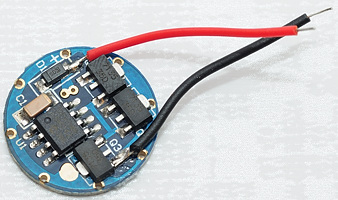
In this type of light the current in the led is the same as the current drawn from the battery. These light need as much voltage as possible to maintain regulation. For current XR-E, XP-E is 1A, XP-G is 1.3A, and a XM-L led will need 3A. if it is possible to count the number of 7135 chips in the driver, it is very easy to calculate the current. Each chip is 1/3 ampere, i.e. 3 chips is 1 ampere.
To find the battery thats maintain the highest brightness for the longest time use the chart "Discharge, capacity down to 3.6 volt"
For 1A current, look for the batteries with the longest blue bar, they will give most runtime.
For 1.3A current, look for the batteries with the longest blue and cyan bars, they will give most runtime.
For 3A current, look for the batteries with the longest yellow bar, they will give most runtime.
Note: These lights will often be fairly safe with unprotected batteries, especially with cell that can be discharged down to 2.5 volt.
Other lights
For other lights a tailcap current measurement can help with establishing the current draw.
Or use power calculations to estimate current: For each led add the watt together: XR-E and XP-E is 3.5W, XP-G is 5.4 W and XM-L is 10 W, divide sum by number of batteries and by 3.7, the result is the current.
An example for A 3 XM-L light with 4 batteries: 10+10+10->30 watt, 30/4/3.7 -> 2 ampere from each battery (It does not matter if they are series or parallel).
Use the "Discharge, capacity" for lights with two or more 18650 cells in series or the "Discharge, capacity down to 3.6 volt" for lights that only works on a single 18650 battery or uses a couple of 18650 in parallel.
When mostly using low modes
For low modes it is the 0.2A red and 0.5A green bar that is most interesting. To see which one, use a tailcap current measurement. For currents below 0.2A it is fine to use the 0.2A bar, lower current draw will not change the rating of the batteries significantly.
 , except when I need my equipment for other stuff.
, except when I need my equipment for other stuff.